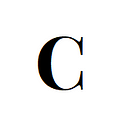A Closer Look At The Breguet Type XX Chronograph
Don’t call it ‘the Type Ex Ex.’
The Breguet Type Twenty was born from a recipe, not unlike a good bowl of pasta. In the early 50s, the French armed forces made a list of attributes for an ideal pilot’s watch, and five different companies ended up designing timepieces that met the specifications.
The official list was never published, but all the watches that were accepted by the military met these criteria:
1. Accurate to +/- 8sec per day
2. Contains a black dial face and white numerals for legibility
3. Approx. 38mm in size
4. Must contain a ‘flyback chronograph,’ a stopwatch-style function enabling quick timing/resetting/re-timing of events
5. Said chronograph must have at least 2 registers to mark elapsed time until at least 30min.
6. Timepiece should have a wind-up power reserve of at least 35 hours
7. The watch should be durable; each example must be tested to operate successfully at least 300 times in a row without failure.
It’s a rather specific list, but how and why did it come about?
Well, in the Second World War a German company named Hanhart made timing chronographs for the Luftwaffe that fit these qualifications perfectly.
In 1945, the French Army occupied the Black Forest and took over the Hanhart factory. ‘To the winner go the spoils,’ and Hanhart ended up being forced to supply watch parts among other things to France as part of the payback after losing the war. In effect, the Type Twenty is a French knockoff of a German Hanhart.
Breguet, Vixa, Airain, Dodane, Boullier, and Auricoste were the companies contracted to make this new watch.
Vixa was sent parts directly from the captured Hanhart factory, so the Vixa Type Twenty watches look the most like Hanharts.
A quick word about Breguet; they are one of the world’s oldest watch companies, but they also have a strong connection with aviation. Louis Charles Breguet, great-great-grandson of the man who founded the watch company, was a pioneering aviator in his own right. He ended up founding both an airplane-manufacturing firm and also the company that ended up becoming Air France.
So not only were Breguet making the watches for pilots back then, in some instances they also manufactured the airplanes pilots flew. That’s an in-house creation process for sure.
About the name of the watch; it’s pronounced ‘Type Twenty,’ not ‘Type XX’ or anything else. That is because this specific nomenclature was how the French government referred to commissioned mechanical instruments a la the Type 20. For example, the Type 10 was a cockpit instrument. The successor to the Type Twenty watch was of course called the Type Twenty-One. Et cetera.
(So don’t believe anyone who calls this watch the ‘Double X.’)
The Type Twenty was produced for the French military for around twenty years or so; the commissions were finally killed off by the quartz crisis around the 1980s. But Breguet and other manufacturers still make these watches for the civilian market, and one can find them relatively easily today.
This particular example dates from 1957, and it’s a first-generation model type as specc’d by the military in 1954. The original luminous paint on these dials was quite radioactive; the ‘radium burn’ on a lot of these old dials is sometimes quite evident. This combined with decades of light on old paint has caused the dial of the pictured watch to fade from black to brown. It’s a quite pleasing-looking patina.
Photos and specific information about the piece depicted c/o Menta Watches.
Thanks for reading, and if anyone knows of any other info on Type XX watches, let us know!
Also we should probably mention that if you like fancy watches, fast cars, cool art, lovely architecture, or just interesting things in general; follow us on Instagram.
We are of course @curated.classics (www.instagram.com/curated.classics/) on that platform. Cheers.
